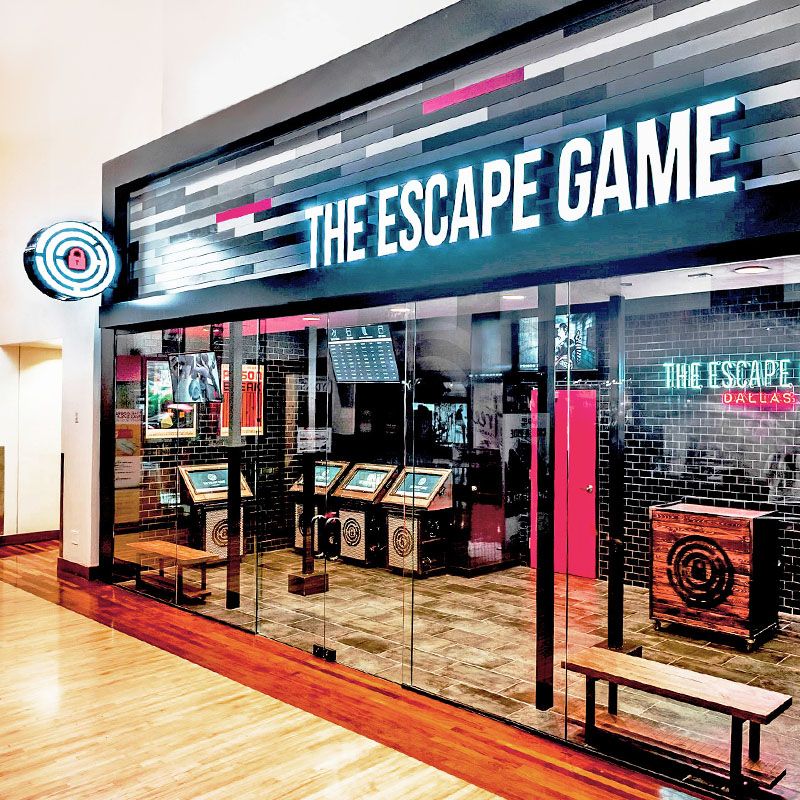Team Strategies: How to Work together Effectively in an Escape Room
Navigating the complexities of a retreat room demands even more than mere enthusiasm; it calls for a well-coordinated approach grounded in clear communication, calculated function tasks, and proficient time management. Groups have to proactively pay attention to each participant's insights, designate functions that straighten with specific toughness, and preserve normal check-ins to make certain focus and protect against redundancy. By cultivating an environment that values cohesion and versatility, groups can substantially enhance their efficiency and success prices. The subtleties of these strategies can change the experience, yet how precisely can they be executed to make best use of the capacity for success?
Establish Clear Communication

To assist in clear interaction, it is necessary to assign a central factor of get in touch with for info circulation. Brief, focused updates from each group participant can maintain the group notified without frustrating them with information.

Designate Duties Strategically
While clear interaction sets the foundation for reliable teamwork, assigning duties purposefully guarantees that each employee's staminas are used successfully. In a getaway area circumstance, the time-sensitive and complicated nature of obstacles necessitates a well-organized method to job delegation. By identifying and leveraging specific competencies, teams can maximize their problem-solving capabilities and boost general performance.
First, analyze the unique skills and features of each individual. Someone with a keen eye for information could stand out in discovering surprise things, while a rational thinker can be much better fit to resolving challenges. It's just as essential to have a leader that can oversee progress, handle the timeline, and make crucial phone calls when required. This function often requires strong business and social skills.
Second, make sure that duties are adaptable and adaptable. As new challenges emerge, the group must have the ability to pivot, reallocating tasks as needed. This flexibility aids maintain energy and avoids traffic jams that might occur because of inflexible duty assignments.
Ultimately, a critical approach to function assignment not just makes the most of the toughness of each staff member yet additionally promotes a natural atmosphere, driving the team in the direction of a successful getaway.
Use Diverse Skills
Identifying and taking advantage of go now the diverse abilities within your group can considerably boost your efficiency in an escape space. Each employee brings distinct toughness to the table, and properly leveraging these capabilities can quicken analytical and improve total efficiency. A group member with solid logical skills could excel at understanding complex codes or patterns, while another with eager empirical capacities might quickly identify surprise ideas that others might forget.
Urge team members to voice their understandings and ideas without delay, ensuring that all prospective services are taken into consideration. Additionally, appointing jobs that line up with each member's staminas can prevent bottlenecks and make sure that progress is continuous.
Moreover, variety in skills commonly equates to variety in assuming designs, which is indispensable in a retreat area setting. While some difficulties might need sensible reasoning and precision, others might take advantage of creative and lateral thinking. By recognizing and leveraging this diversity, groups can address a broader series of difficulties more effectively, thereby increasing their chances of a successful getaway.
Manage Time Effectively

Identify noticeable puzzles and separate jobs based on group participants' strengths, guaranteeing that nobody is idle. This method can help maintain the group concentrated and protect against time from slipping away undetected.
Additionally, prevent one-track mind. If a problem is taking too long, turn group members or proceed to one more difficulty, returning later on with fresh perspectives. Communication is vital-- maintain everyone upgraded on fixed puzzles and staying tasks to prevent repetitive efforts.
Last but not least, make use of any type of hints or hints sparingly but strategically - best escape room. Knowing when to request assistance can conserve beneficial time. By adhering to these time monitoring principles, groups can substantially improve their possibilities of an effective and delightful my blog retreat room experience
Debrief and Reflect
Representation is an important aspect of team development and renovation in the context of escape rooms. When the difficulty is completed, whether effectively or otherwise, it is important for the link team to involve in a structured debriefing session. This process permits staff member to examine their performance, recognize strengths, and pinpoint areas for renovation.
Begin the debrief by discussing what went well. Highlight specific circumstances of effective interaction, problem-solving, and partnership. Identifying these favorable habits reinforces them and motivates their repeating in future challenges.
Following, deal with the barriers ran into. Discuss minutes of complication, miscommunication, or ineffective strategies. Motivate an open and positive dialogue where team participants can share their viewpoints without worry of criticism. This cultivates a culture of constant improvement and knowing.
Verdict
Finally, successful collaboration in a getaway room is asserted upon clear interaction, critical duty tasks, the effective application of varied skills, and skillful time management. Routine check-ins and organized debriefings are essential for maintaining emphasis and cultivating constant improvement. By creating a natural and flexible group environment, the probability of effectively solving problems and attaining the objective of leaving the room is significantly improved. This technique not only guarantees success but also promotes collective growth and learning.
Comments on “Best Escape Room Experience-- Exciting Gamings and Puzzles for Groups”